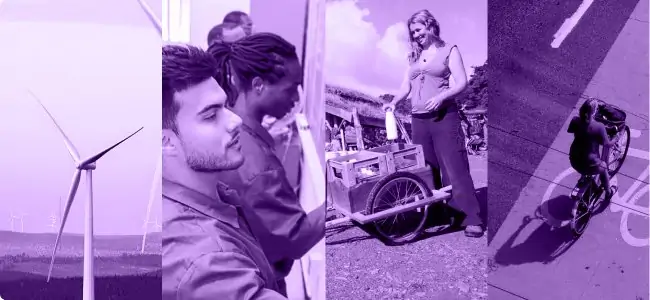In 2021, before Norway’s general elections, politician Jonas Gahr Støre was kidnapped outside the parliament building. A net thrown over his head, he was marched into a dark room and interrogated.
It was a publicity gimmick by a TV show, and yes, Støre was a willing partner. Afterward, everyone was suddenly talking about TV Bra — the Norwegian news station where all reporters are autistic or have learning disabilities. It produces a weekly one-hour magazine program that covers news, entertainment, sports and more, streamed on major platforms like TV2 Play, and is also accessible through the station’s own app and website.
“We’re interested in all sorts of issues and people,” says Emily Ann Riedel, a long-time freelance reporter with the channel who has Down syndrome. “Whatever we report on, it is important to ask the right questions … and I’m very proud that we ask the right questions!” Mock hostage Støre went on to be elected as the country’s prime minister and has since been interviewed several times by TV Bra. “I asked him about the rights of people with learning disabilities in Norway. He said that they were important – but like most politicians, didn’t do all that much to improve them!” Riedel quips.
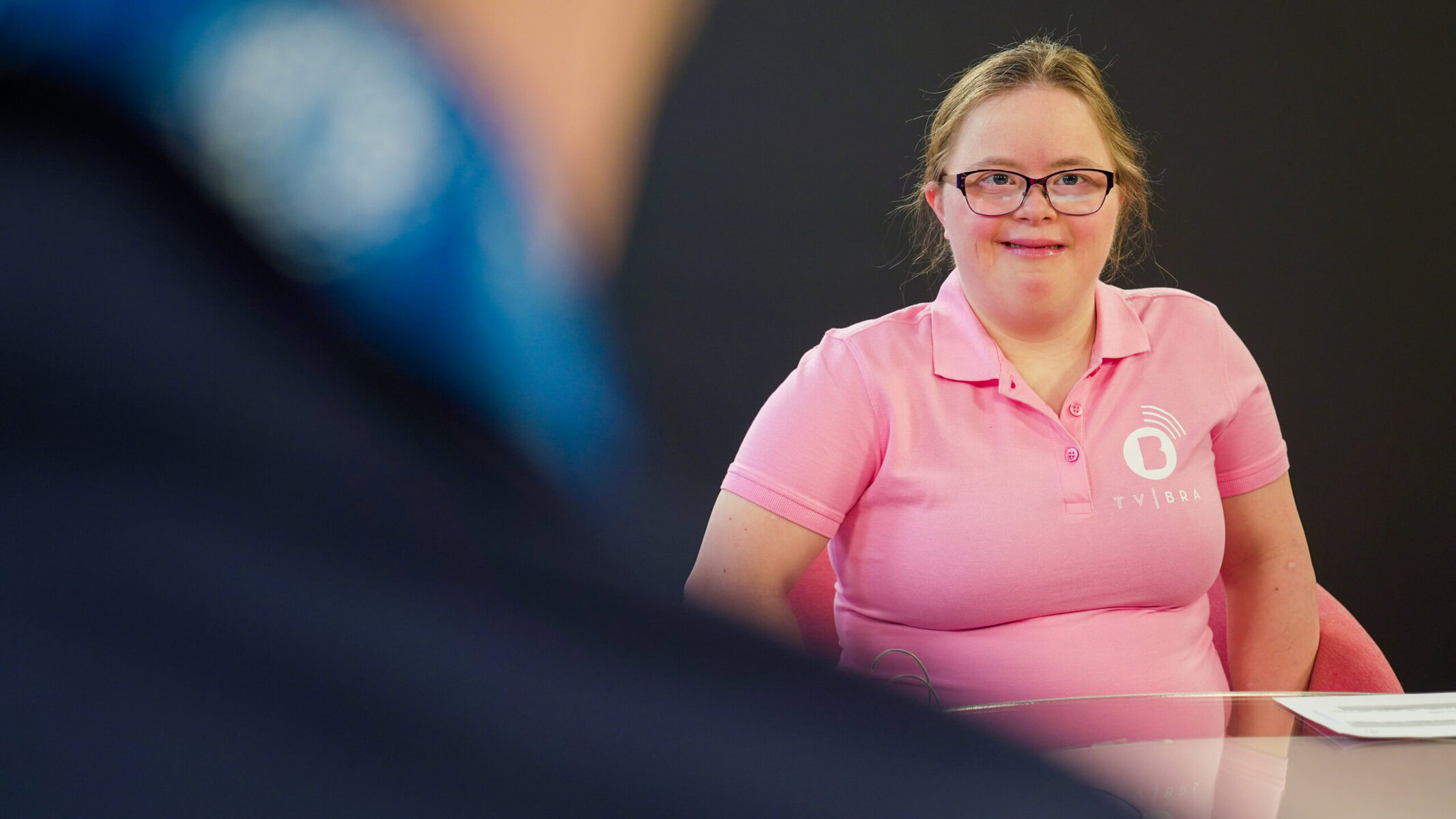
Although an estimated 1.3 billion people, or 16 percent of the world’s population, experience some form of disability, very few newsrooms employ journalists with disabilities. This is what makes TV Bra unique. Its weekly show is presented in Norwegian, in a simple format, and moves more slowly than mainstream news reports. Between 4,000 and 5,000 people tune in every week.
“For people who are normal, there are so many options of things to see, read and learn,” Reidel says. “For people like us, there’s TV Bra.”
The idea of TV Bra — which translates to “TV Good” — came to managing editor Camilla Kvalheim’s mind when she was making a film on people with learning disabilities at a residential care home in Bergen over a decade ago. As she began filming, she found to her surprise that the camera subtly changed the dynamic between her and the people she was filming. “Suddenly when we were working together on the film, we became a crew, a team of equals,” Kvalheim recalls. But although her creative collaborators had an original take on the world around them, she realized that they were being “systematically excluded from mainstream media,” she says. “Many were unable to comprehend long sentences, and this made the regular news content available to them hard to understand.”
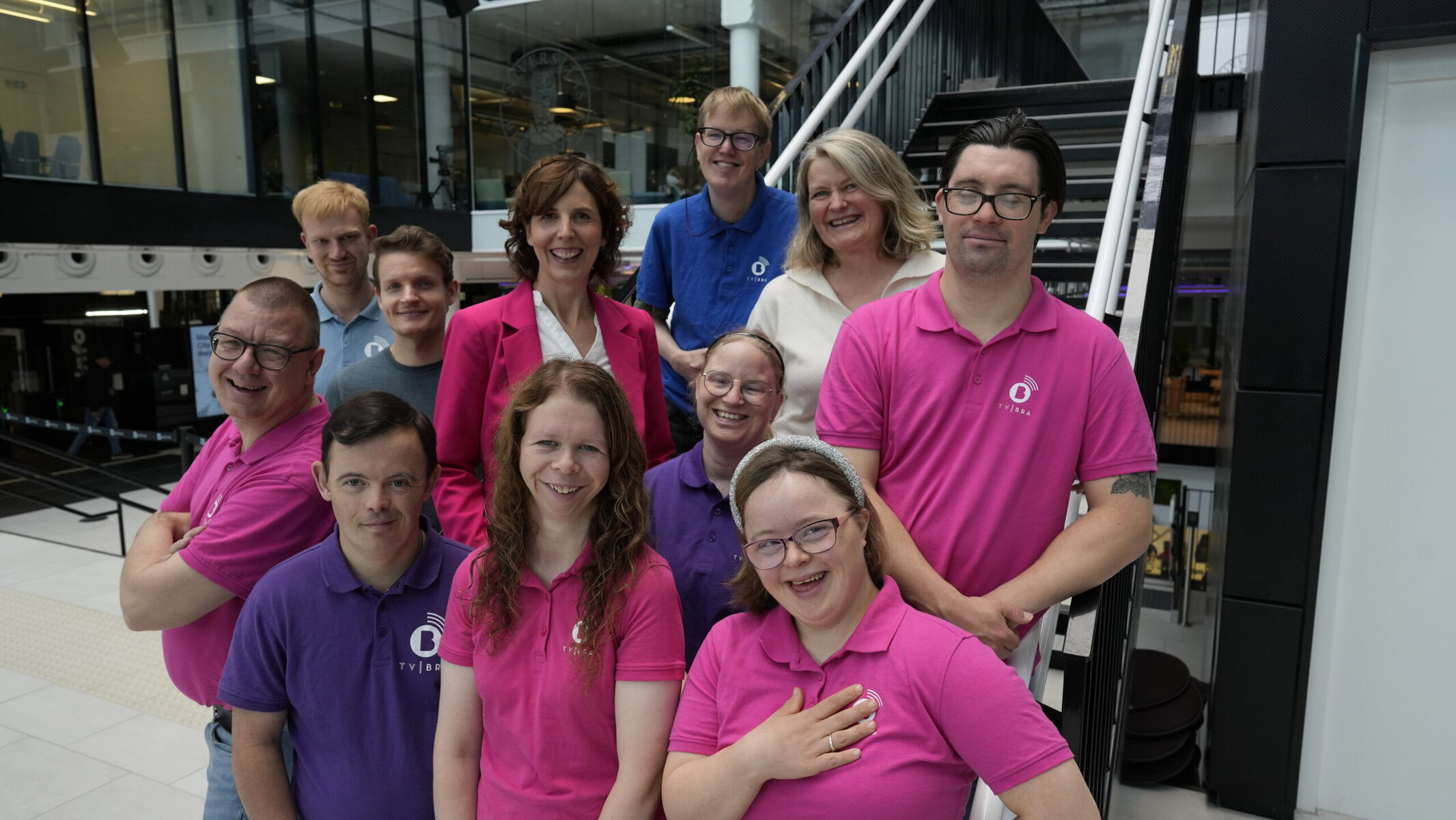
Growing up with journalist parents, Kvalheim knew the importance of being news-savvy. “Being well-informed about current affairs, sports and culture makes us interesting people, and it also opens up job opportunities,” she says. But she saw that at the care home, some people with learning disabilities found mainstream news hard to follow, while others felt that the topics covered were not always relevant to them. This was affecting their employability as well as their sense of connectedness to the external world. In Norway, the employment rate for adults with intellectual disabilities between 20 and 69 years of age is 24.5 percent, compared to the overall employment rate of 77.4 percent.
By developing programming that would interest disabled audiences, delivered by people with learning disabilities, TV Bra sought to change all this. Its first broadcast went on air in 2019 in Western Norway, and the channel went national in 2020. Today, the station has its own studio, 10 full-time reporters and a network of freelancers across the country. Many of TV Bra’s broadcasts raise awareness about issues in the disabled community that mainstream news often misses. For example, the show covered a local initiative, Project URO, which is working to prevent substance abuse problems among people with intellectual disabilities. And when the 2025 parliamentary elections were announced, the TV Bra crew interviewed politicians and workers who want the government to increase the number of special jobs available for people with learning disabilities at a breakfast meetup.
Weighed down by negative news?
Our smart, bright, weekly newsletter is the uplift you’ve been looking for.Lisa Grotle Nilsen has been with TV Bra since 2022, and loves reporting on fashion and lifestyle, among other topics. “Last week, I experienced several outdoor activities with therapy dogs in Bergen. The weather was lovely, it was so nice to be outdoors, and I was so happy to be able to show viewers some fun things that they could do in their spare time,” she says. Both Nilsen and Reidel are conscious that their work not only informs, but also can potentially inspire their audience. “Sometimes, people tell me my work is important…” Nilsen says, adding, “it makes them sit up and say, wow, I can also do it if she can!”
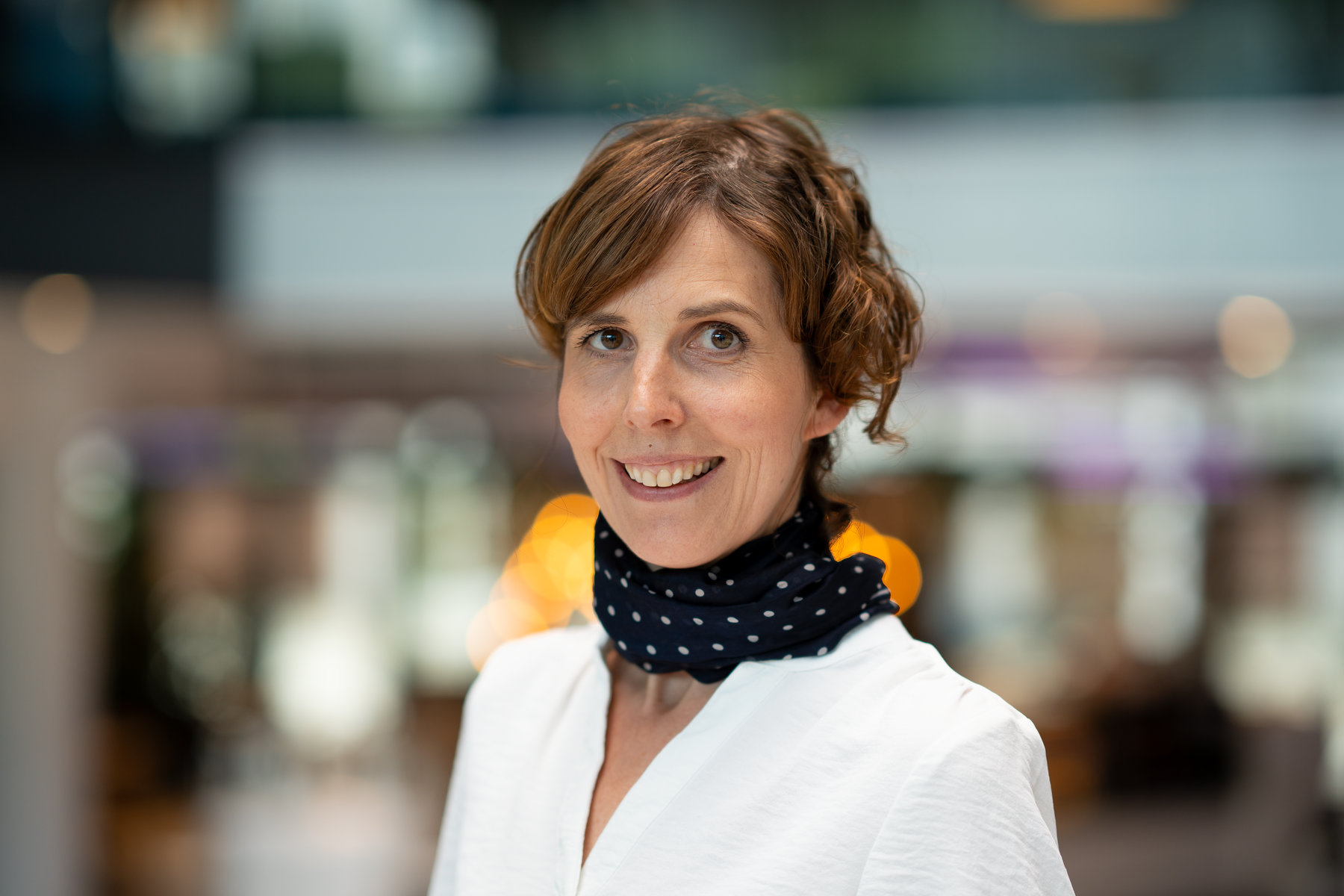
Kvalheim received the Diversity Award for her work on TV Bra from the Media Network, which is committed to promoting diversity in Norwegian media in 2023. The citation stated, “She thinks differently and courageously about who can be journalists, and who can be the recipient of journalism. She aims high and has ambitions on behalf of her activities to highlight voices that are not usually shown in the social debate.”
In spite of these accolades, the crew of TV Bra faces a multitude of challenges. “Although we have gained so much goodwill from politicians, policy makers and all the important people we feature, this goodwill doesn’t translate to positive action — jobs, funding, et cetera,” Kvalheim says. While the station receives state funding, and has revenue from supplying TV2 with a weekly show, money is hard to come by for a show that many consider too niche. This is curbing their expansion plans. Currently their show is weekly, and Kvalheim says, “to increase the frequency, we would need to expand our team and double our funding.”
Expansion will also entail many more hours of work. Unlike the staff of most mainstream TV shows, the TV Bra reporters, who have varying reading abilities, need several rounds of rehearsals so that they appear polished and professional on screen. Reidel, for instance, says that she practices her script many times before coming on set so that she does not read out her lines on camera. Initially, Kvalheim had hoped to have people with learning disabilities on their production team and camera crew as well. “But we finally had to hire mainstream professionals with experience, in order to have better production values,” she says, stressing how important it is to TV Bra to be taken seriously as a news agency. “Sometimes when I see a regular TV show, I feel it looks so easy and effortless in comparison to what we do!”
Although Nilsen and Reidel say that they love their work, they also get paid less than their mainstream peers. TV Bra’s reporters receive Norwegian disability benefits and a salary which Kvalheim estimates is about 20 percent of a comparable wage.
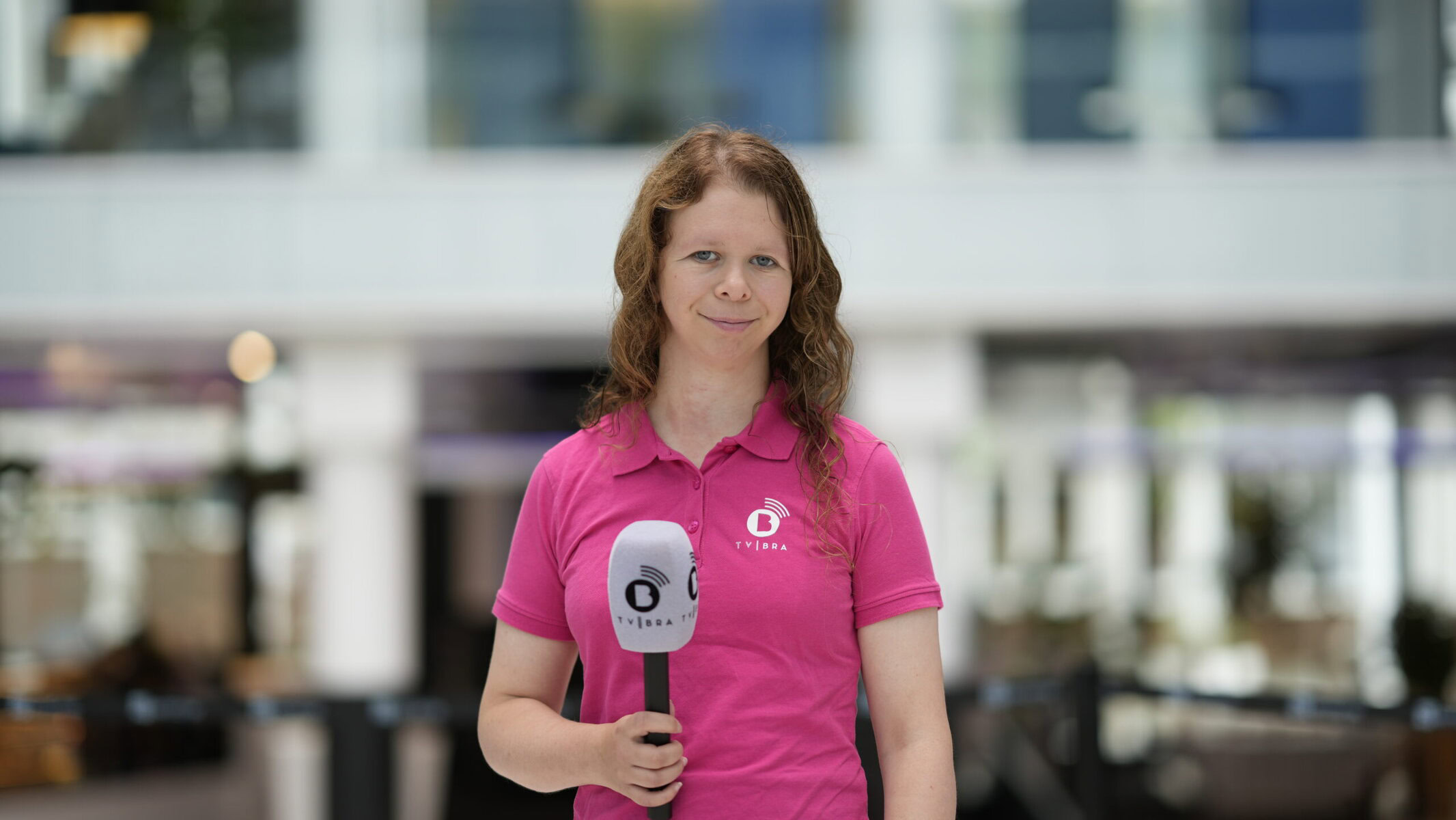
Such limitations might make the TV Bra model hard to replicate, but Kvalheim believes that it is crucially important to do so. “People with learning disabilities rarely feature in political discourse,” she says, adding that it is imperative to show through their broadcasts that they are not that different from everybody else. TV Bra’s shows also illustrate what some accessibility advocates refer to as the Curb-Cut Effect: programs designed to benefit vulnerable groups, such as the disabled, often end up benefiting all of society. Its brand of easy, accessible programming could be useful to people with lower education levels, memory and attention disorders, or even the very young or very old, who might find mainstream news too complex to follow. “We’ve received lots of great feedback to our shows,” Kvalheim says. “When we made our election broadcasts in 2023, many told us how interesting they were, not only to people with learning disabilities, but to a slightly wider spectrum of people.”
Today, across Europe, disability representation in the media is a growing trend. In 2024, Channel 4 in the UK worked exclusively with disabled presenters to cover that year’s winter Paralympics. The channel features shows like The Last Leg, which is presented by Alex Brooker, who has a limb difference, and comedian Adam Hills, who wears a prosthesis and advocates for disability rights. In sports coverage, Channel 4 also employs Paralympians like Ade Adepitan as presenters, further establishing the channel’s approach to inclusivity. In France, public broadcaster France Télévisions developed a directory of 100 experts with more diverse profiles in terms of race, age, gender and disability in 2011. The network regularly features news segments and special programs presented by individuals with disabilities. Similarly, Germany’s ZDF has showcased disabled presenters in a variety of programs, from entertainment shows to documentary series.
“Some have said that TV Bra caters to a very niche audience,” Kvalheim says. “But I believe that as a society, we can’t just ignore anyone. We have to make ourselves more intelligible, and we have to make them [people with learning disabilities] more visible.” And this is slowly happening, in Norway at least. Nilsen loves it when she is recognized on the streets. “It feels nice that my work is being seen,” she says. “It makes me so proud!”
Reidel says that she was over the moon when someone requested an autograph. “Of course I gave it, and then I asked them to follow us on our social media pages,” she says with a smile. “I want the whole world to see me, follow me, hear my voice.”




